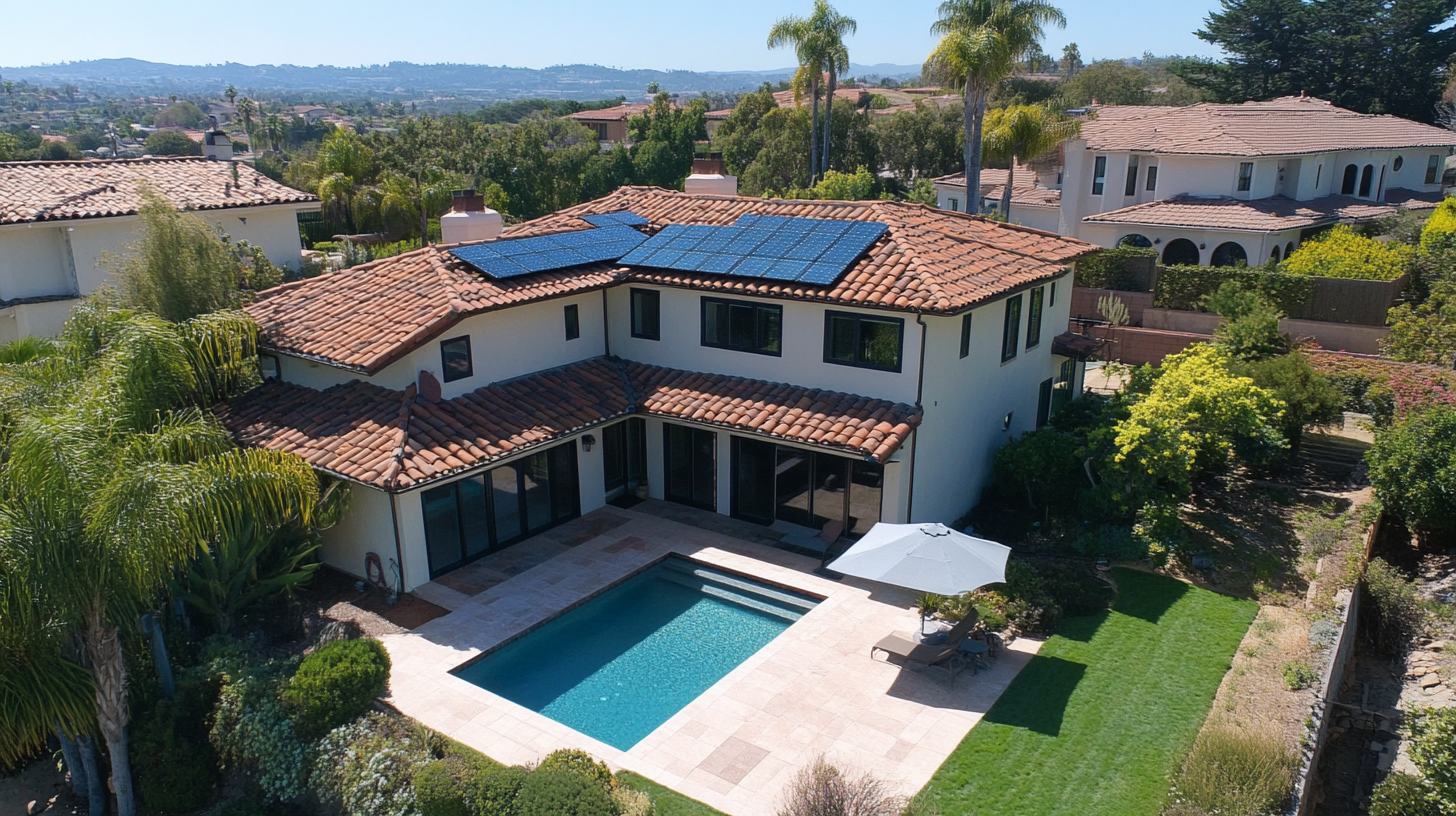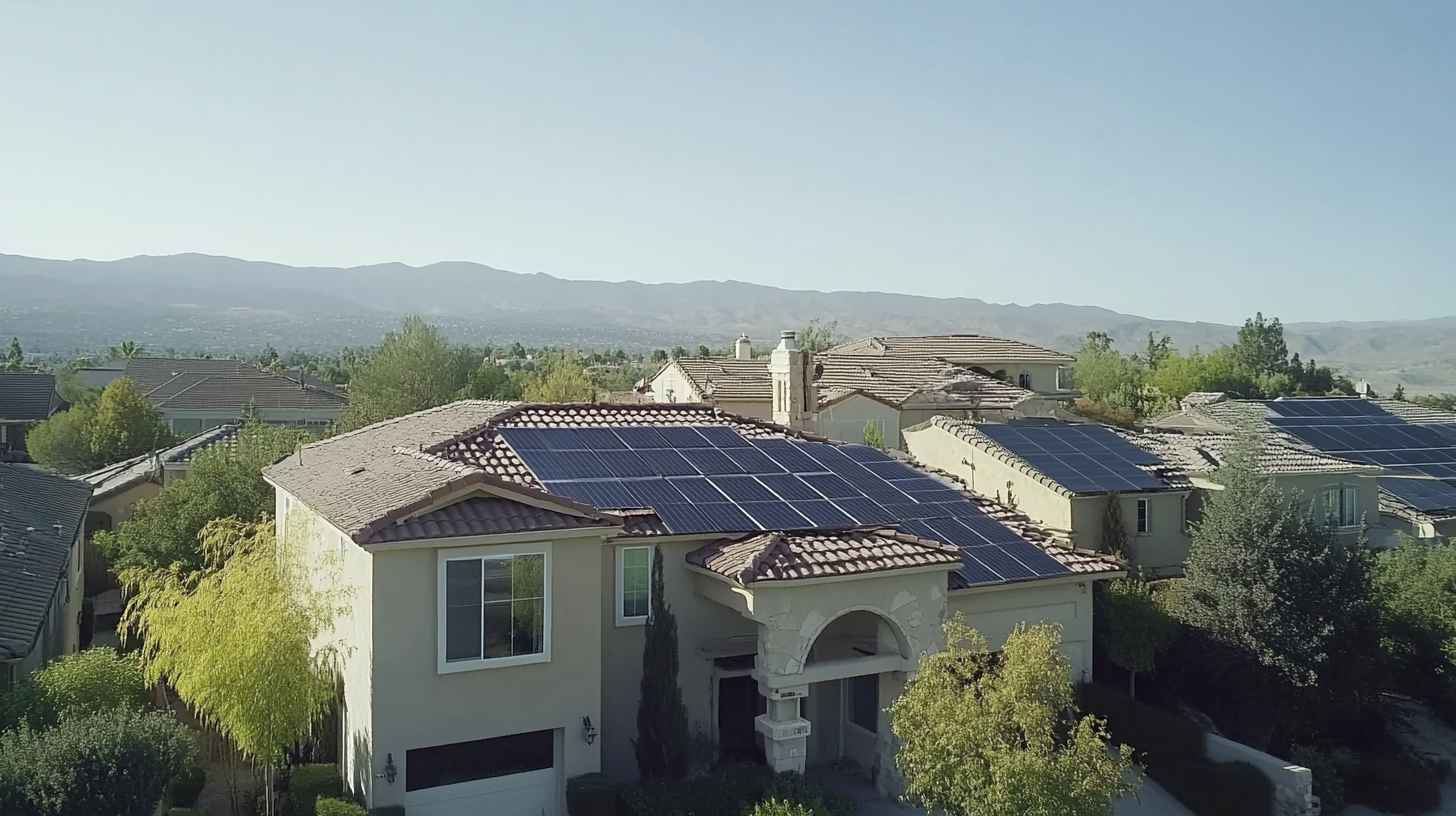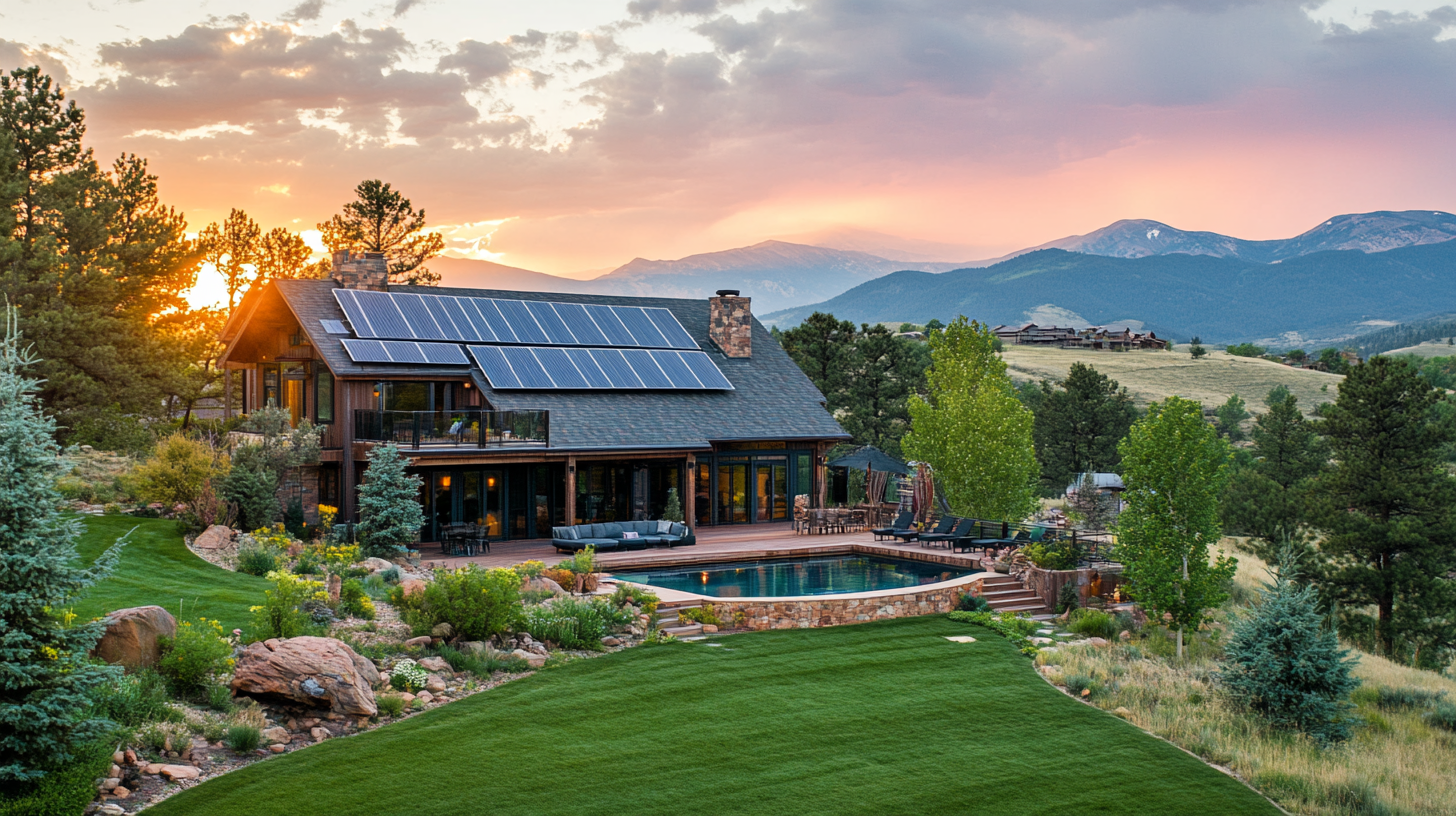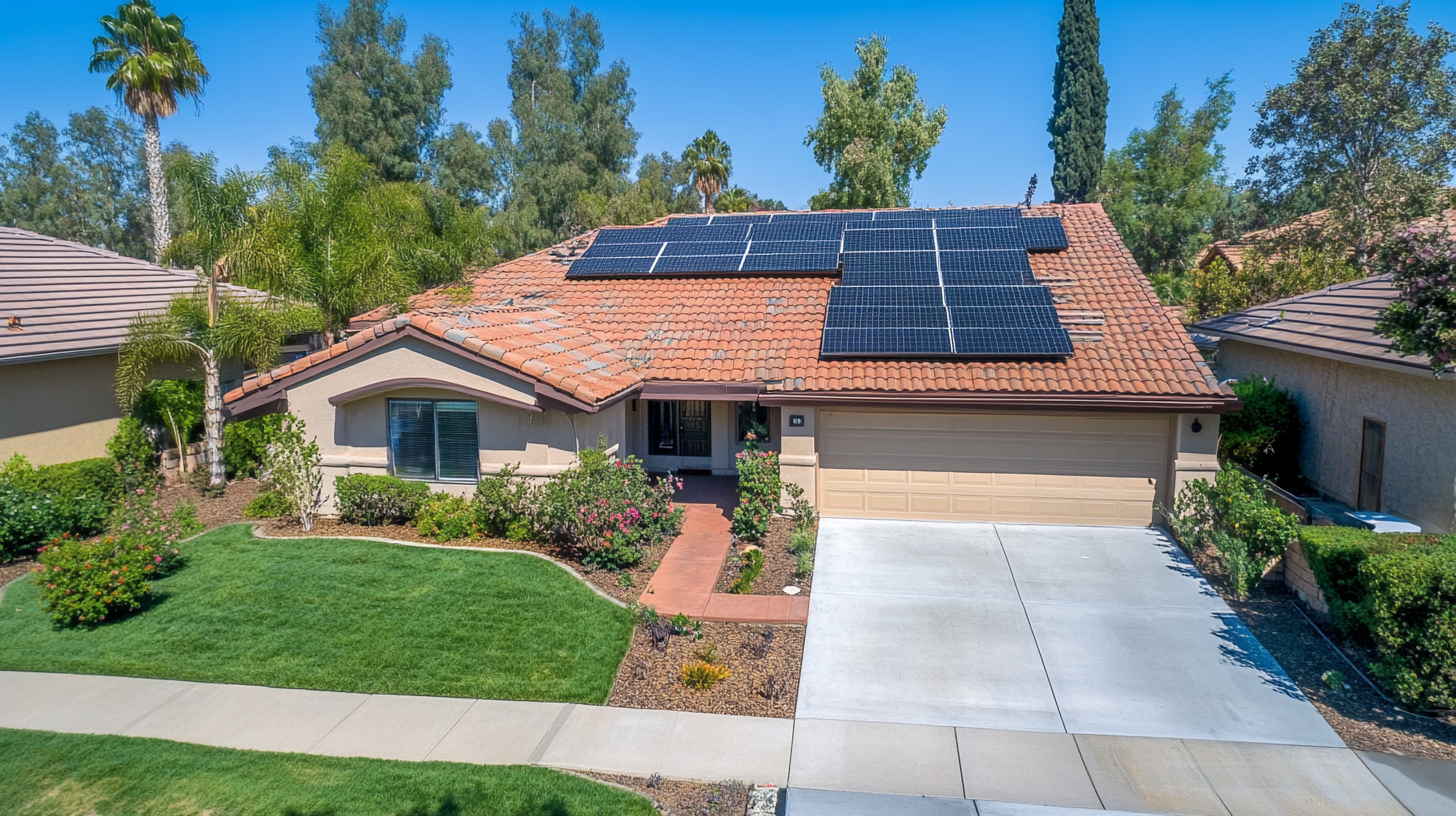How to Choose the Best Residential Solar Power Systems for Your Home
As the demand for sustainable energy solutions continues to rise, homeowners are increasingly looking toward Residential Solar Power Systems as an effective way to reduce their electricity bills and carbon footprint. According to the Solar Energy Industries Association (SEIA), the residential solar market experienced a robust growth rate of 15% in 2022, with over 4 million homes in the United States now powered by solar energy. This shift is largely driven by advancements in technology and significant decreases in solar panel prices, which have fallen by 70% over the past decade. As such, investing in solar power is not only environmentally beneficial but also economically advantageous.
Choosing the right Residential Solar Power System requires careful consideration of various factors to ensure optimal performance and maximum savings. Reports from the National Renewable Energy Laboratory (NREL) indicate that proper system design and installation can enhance energy production by up to 30%. Homeowners must assess their energy needs, roof orientation, and local solar incentives before making a decision. With many options available on the market today, this guide aims to equip you with essential knowledge to navigate the process of selecting the most suitable solar power system for your home.

Understanding Your Home's Energy Needs for Solar Power
When considering the installation of a residential solar power system, understanding your home's energy needs is crucial for making an informed decision. According to the U.S. Energy Information Administration (EIA), the average American household consumes about 877 kWh per month. This figure can vary significantly based on factors such as location, home size, and energy efficiency practices. By accurately assessing your energy consumption, you can determine the right size solar power system that will not only meet your needs but also maximize your savings on energy bills. Moreover, assessing your energy requirements involves taking into account seasonal fluctuations. The National Renewable Energy Laboratory (NREL) reports that homes in warmer climates may experience higher energy use during the summer months due to increased reliance on air conditioning. Thus, evaluating your energy consumption patterns over the course of the year can provide a clearer picture of how much solar power you'll need to offset your usage. Additionally, utilizing energy monitoring tools can help track real-time consumption and identify areas for improvement, ultimately leading to a more efficient system. Once you have a clear understanding of your energy needs, it’s time to consider how to optimize your solar power installation. According to a report by the Solar Energy Industries Association (SEIA), incorporating energy efficiency upgrades—in addition to solar installations—can increase overall savings. Choosing energy-efficient appliances, enhancing insulation, and implementing smart home technology can substantially reduce your energy load, allowing you to select a smaller solar system that still meets your needs effectively. This integrated approach not only lowers installation costs but also enhances the overall sustainability of your home.

Evaluating Different Types of Residential Solar Power Systems
When evaluating different types of residential solar power systems, it’s crucial to understand how various configurations can impact efficiency and savings. Solar photovoltaic (PV) systems remain the most popular choice for homeowners seeking to harness solar energy. According to recent benchmarks from the Solar Energy Technologies Office (SETO), efforts to reduce solar electricity costs have led to significant price drops in solar technology, making installations more accessible. For example, the average cost of solar PV systems has decreased by over 70% since 2010, making now an opportune time for homeowners to consider their options.
Another important aspect to consider is the integration of battery storage systems, which enhance the efficiency of solar installations. Current trends indicate a growing popularity in solar PV microgrids, particularly in urban neighborhoods, where optimizing layout can support large-scale solar strategies. Research suggests that battery storage solutions, such as standalone hybrid solar-diesel-battery systems, can significantly improve energy access and reliability, especially in areas with inconsistent grid power.
Additionally, tools like the Present Value of Photovoltaics developed by the National Institute of Standards and Technology (NIST) can guide homeowners in evaluating the environmental and economic impacts of their solar investments. These resources can help with informed decision-making, ensuring that prospective solar adopters choose the best system tailored to their specific energy needs and local conditions. As technologies evolve and costs decrease, the potential for residential solar systems continues to expand, making them a salient option for sustainability-focused homeowners.

Key Factors to Consider When Selecting a Solar Installer
When considering the transition to solar energy for your home, selecting the right solar installer is a pivotal step that can significantly influence your overall experience and return on investment. As the residential solar power market continues to expand, with projections indicating that the miscellaneous solar battery market size is expected to grow from $3.97 billion in 2025 to $7.95 billion by 2032, a compound annual growth rate of 10.43%, homeowners are increasingly looking to capitalize on this trend.
One of the key factors to evaluate when choosing a solar installer is their experience and qualifications. Installation teams should possess relevant certifications and a proven track record of successful installations in your area. Additionally, inquire about the materials and technology they use, as advancements in solar panel efficiency can have long-term benefits for energy generation.
Another critical consideration is customer reviews and testimonials. Researching the installer’s reputation can provide insight into their reliability and quality of service. It's advisable to request references and check for any complaints filed against the installer with local consumer protection agencies. Lastly, ensure that the installer offers comprehensive warranties and maintenance services, as these can be indicators of their commitment to customer satisfaction and product longevity. By focusing on these key factors, you can make an informed decision that aligns with your energy needs and financial goals.

Budgeting and Financing Options for Solar Power Systems
When considering solar power systems for residential homes, the budgeting and financing options can significantly influence the overall investment and returns. According to the Solar Energy Industries Association (SEIA), the average cost of residential solar power systems in the U.S. has decreased by more than 70% since 2010. This reduction in prices opens up greater opportunities for homeowners to consider solar energy as a viable option, especially when budgeting for long-term savings on energy bills.
One popular financing option is the solar loan, which allows homeowners to pay for their solar panels over time while enjoying the benefits of lower energy costs immediately. Reports indicate that more than 60% of residential solar installations are financed through loans, which can offer no-money-down options and fixed interest rates as low as 3.5%. Additionally, power purchase agreements (PPAs) and solar leases allow homeowners to install solar panels with little to no upfront costs, paying only for the energy produced, typically at a reduced rate compared to local utility prices.
Beyond traditional loans and leases, it’s essential for homeowners to consider government incentives that can significantly reduce the initial financial burden. The federal solar tax credit, known as the Investment Tax Credit (ITC), allows homeowners to deduct 26% of the cost of installing a solar energy system from their federal taxes. This incentive, combined with various state rebates and local programs, can facilitate substantial savings, making solar power more accessible to a broader audience.
Assessing Long-Term Benefits and Maintenance of Solar Energy Solutions
When considering the long-term benefits of residential solar power systems, it's essential to look beyond the initial installation costs and examine the overall value they can provide. A well-chosen solar energy solution not only reduces your electricity bills but also increases the value of your home. Over time, homeowners can witness significant savings as utility rates climb, making solar energy an increasingly attractive option for sustainable living.
Maintenance is another crucial element in assessing solar energy solutions. Most solar panels come with a warranty of 20-25 years, and they require minimal upkeep. Routine checks to ensure that no debris or vegetation obstructs the panels can significantly enhance their efficiency. Additionally, investing in a quality maintenance plan can further prolong the lifespan of your system, ensuring that your solar setup continues to operate at its best.
Ultimately, understanding both the long-term benefits and maintenance requirements will equip you to make a well-informed decision in choosing the right solar power system for your home. By prioritizing these aspects, you can enjoy reliable energy savings and contribute positively to environmental sustainability for years to come.


